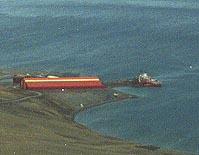|
|
 |
If you see ice, it is probably sea ice
by Gerhard Behrens
| Isn’t all the ice floating in the Arctic icebergs? No way. Most of the ice in the Arctic is sea ice. A few things about sea ice and icebergs are the same, but most things are very different. |

|

|
| The biggest difference between the two is icebergs always come from a glacier, which is made from snow or rainwater. Sea ice is always formed from the ocean water. Second, icebergs are much taller than sea ice. A floating chunk of glacier must be 5 meters (15 feet) tall to be considered an iceberg. Third, glaciers are always 100% fresh water. Sea ice ranges from kind of salty to 100% fresh. |
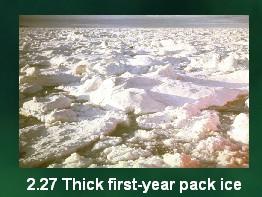
|

A grounded hummock in shallow water. |
| In the page about icebergs, you find out that icebergs can be named, measured, and described in many ways. Keep reading to find out about the science of sea ice. |

|

|
Seawater becomes ice at –1.8 ° C… below the freezing level of fresh water.
The salt in sea ice makes it weak because salt crystals form tiny pockets. Icebergs are the strongest kind of ice because it is compacted, freshwater. The more salt in sea ice, the weaker it is. (see diagram)
Colder sea ice is stronger ice. Older sea ice is stronger, too. The older ice is usually colder, and it has had time to force out more salt crystals, which sink to the bottom.
Sea ice that was formed in calm water is stronger than sea ice formed in water that is in motion. The ice crystals can form in neat, regular patterns in calm water.
Sea ice that was formed slowly is stronger than sea ice that was frozen quickly. The slow process allows the salt to be forced down and out.
Wind pushes sea ice around more than current. (That is the opposite of icebergs) Sea ice is also moved around by the spin of the earth (Coriolis Effect), high and low air pressure, and bumping from other sea ice. |

The Healy steers into a lead. |
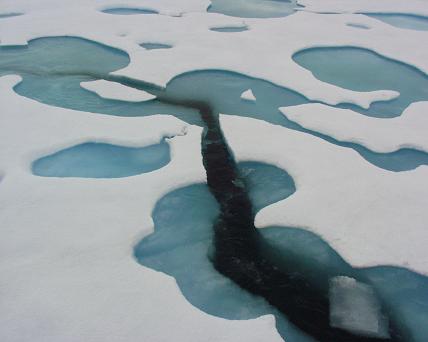
The Healy creates a crack, and a lead, in first year ice. |
Just as glaciers have lots of names, sea ice comes in different forms:
Frazil ice
Grease ice
Shuga ice
Ice rind
Nilas
As it ages, it can be renamed:
First year ice
Second year ice
Multi-year ice
When it forms with river runoff in a shallow area it can be further classified:
Grounded ice
Stranded ice
Grounded hummock
Anchor ice
Ice foot
Fast ice
When it cracks or breaks up, there are names for that, too!
A crack (naturally) is between a centimeter and one meter
A fracture is between 1m and many kilometers
A lead is big enough for a ship to steam through
A polynya is a big hole caused by warmer water or warmed water
A marginal ice zone is moving water with broken ice.
As it breaks up, collides with other ice, and deforms, there are lots more fun names:
Rafted ice (an ice floe that has crashed into another one)
Finger rafts
Pancakes
Ice cakes
Ice floes
Ridges
Rubble field
Hummocks
Brash

|

|
| With the affects of wind, currents, sun, rain, puddling, and albedo (darker things such as puddles and soil trap more sunlight and heat), sea ice eventually decays. Every winter, however, more is on the way! |

|

|
| Special thanks to Noetix Research, Ottawa, Canada; Canadian Ice Service; National Ice Center, Washington, D.C. for information and pictures. |
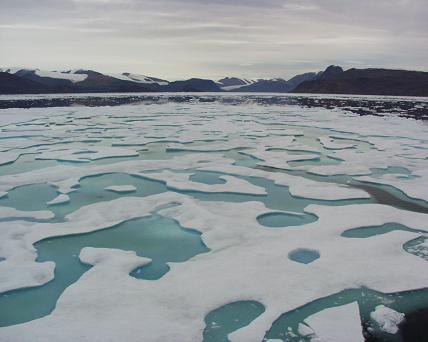
First year ice with thaw puddles in Alexandra Fiord. |
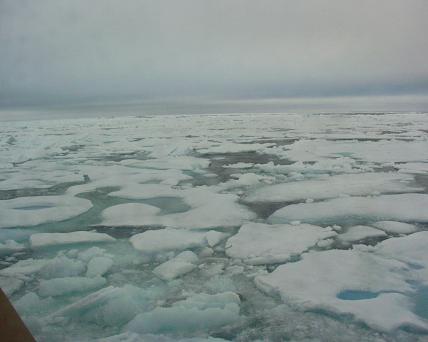
More first year ice for the Healy. |
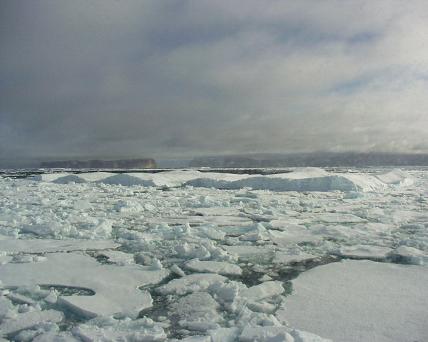
From the bow, breaking ice. |
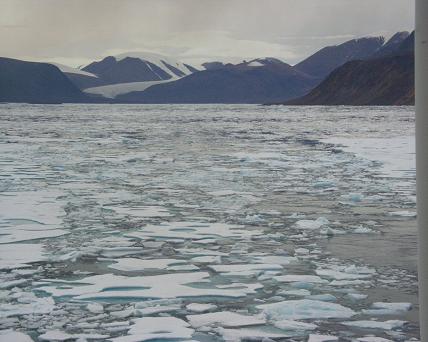
The Healy’s mission: polar science. |
|
|
|


